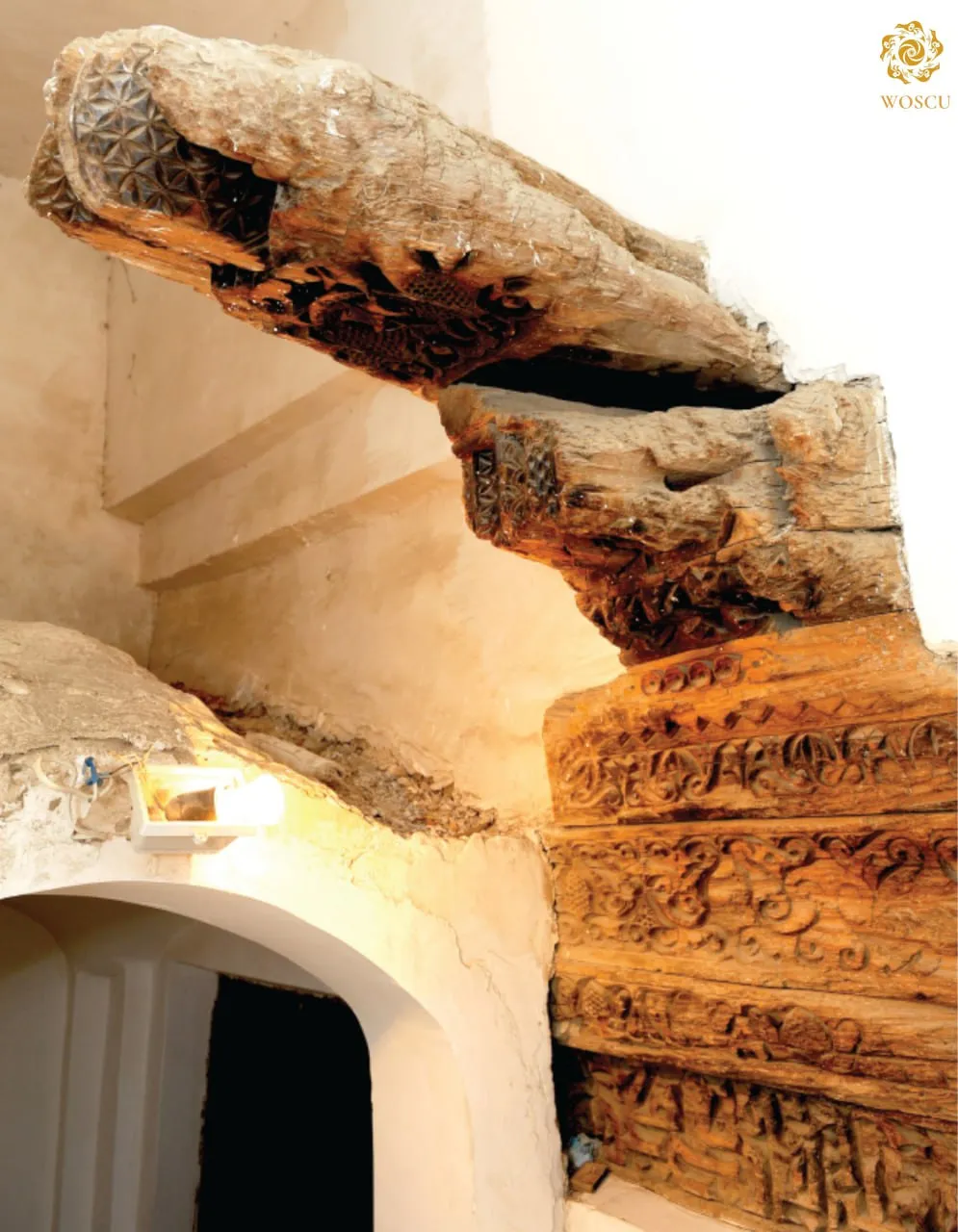They were discovered during the research works in the 1960s. These fragments of wooden structures were the frieze and the console the polished surfaces of which had been covered with carved ornaments and an inscription in the style of that period. It should be noted that such ancient examples of wood carving occur in Central Asia extremely rarely. This sample is the only one found in Samarkand and it refers to the 11th century.
The ornaments and an inscription on the frize are made in the technique of deep carving. The calligraphy is kufic, the diacritic signs are absent. Penmanship's paleography entirely conforms to the styles of the 11th century. The text represents a part of the dedicatory inscription such as an epitaph, or, more precisely, a concluding formula (a prayer) addressed to the unknown decedent.
… may Allah bestow His Grace upon him and his parents, [and also] all the Muslims! Oh, the Most Gracious among the Gracious! [Completed] on the date of the month of mukharram …
You can read more about the inscriptions on the buildings of the memorial ensemble in the book-album “Samarkand. Shakhi-Zinda” series “Architectural epigraphy of Uzbekistan”.

